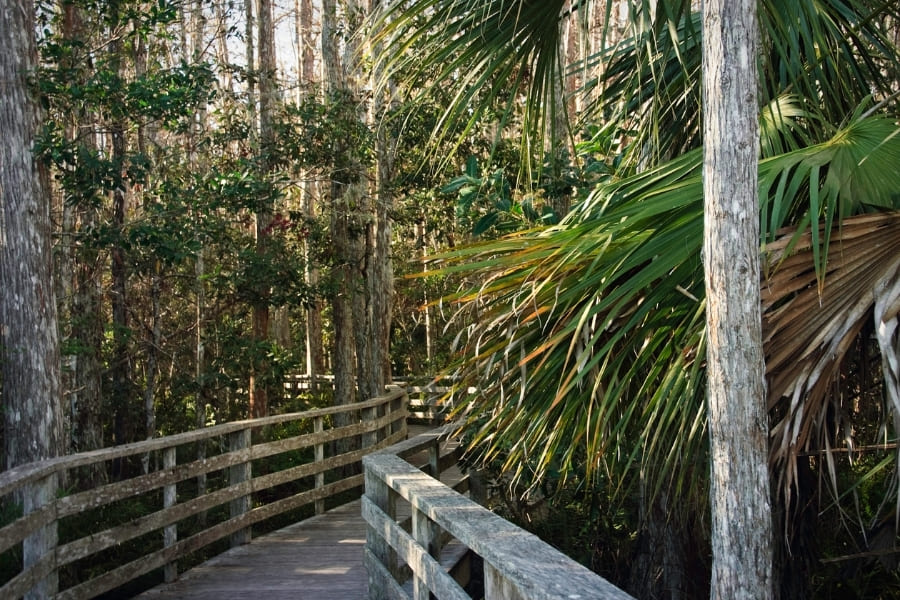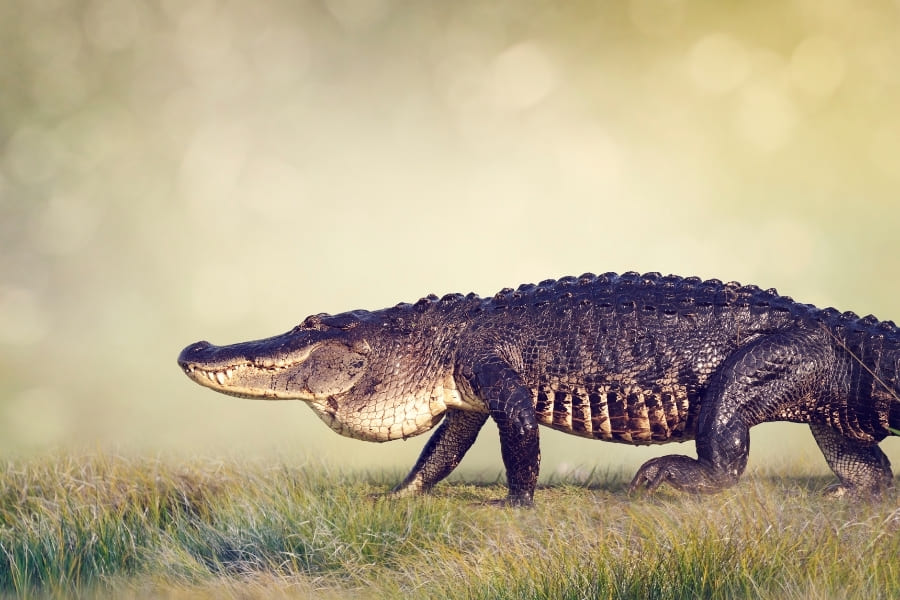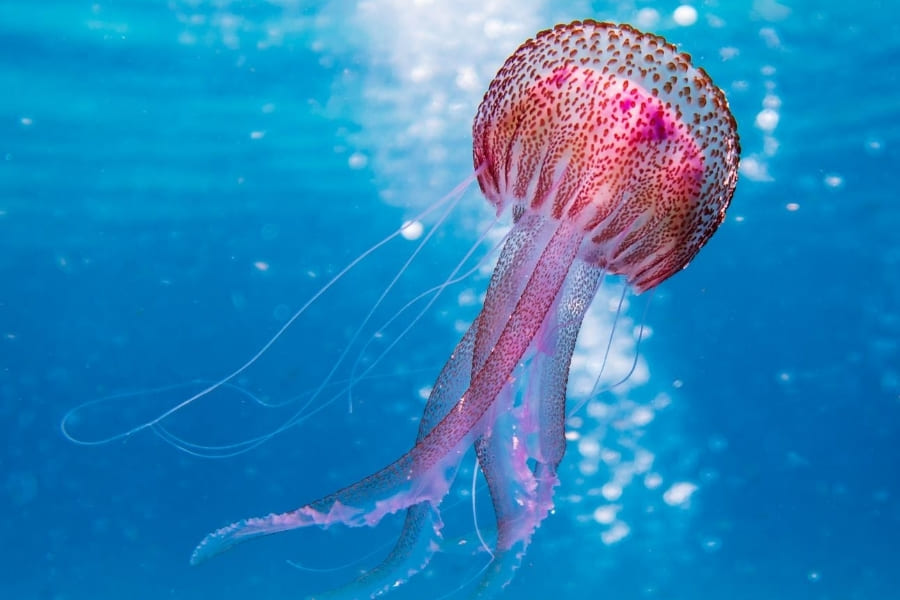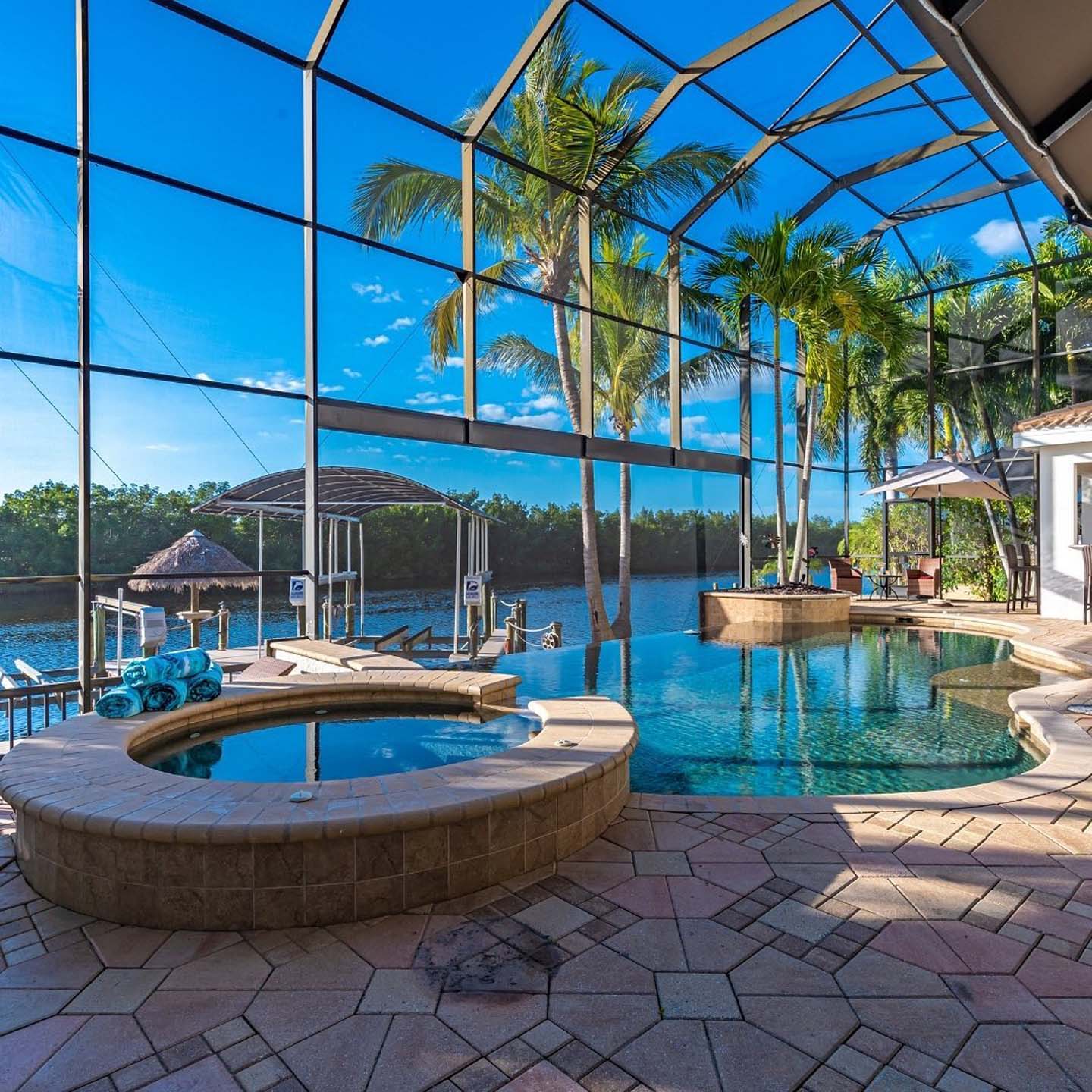Alligators, turtles, raccoons and a wide variety of birds – visitors in Naples who want to see Florida’s wildlife up-close will love the Corkscrew Swamp Sanctuary. This nature preserve in the western Everglades harbors many rare species and allows a glimpse of South Florida’s unspoiled landscape. Not only nature fans with binoculars come here, though. Benches, picnic areas and easy hiking paths in the shade make Corkscrew Swamp Sanctuary a perfect place for families with children.
CORKSCREW SWAMP SANCTUARY IN A NUTSHELL
Corkscrew Swamp Sanctuary was established in 1954 to save Florida’s native cypress trees. It was the National Audubon Society that first built a hiking trail. Today, this nature preserve houses the last big cypress forest in North America, after most trees had been cut down in the 1940s and 50s. Some of these gnarly giants are up to 600 years old. Rivers, swamps, pine highlands, flooded meadows and wild orchids also make up the sanctuary’s landscape. Another prominent feature is “Salad Lake”, which got its name for the salad-like hyacinths on its surface.
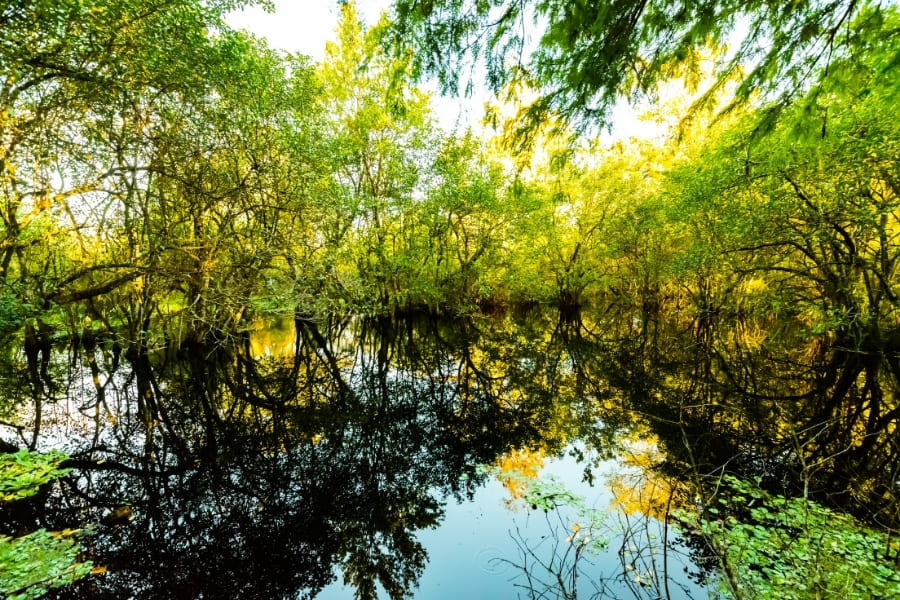
THINGS TO SEE AT THE CORKSCREW SWAMP SANCTUARY
Your first stop is the Blair Audubon Visitor Center. Here, you can watch a movie about the sanctuary and see baby alligators behind glass walls. In addition to postcards, souvenirs, T-shirts and books about Florida’s wildlife, binoculars are available here – perfect for bird-watchers. There are also educational leaflets for adults and children.
Winding through Corkscrew Swamp Sanctuary is a hiking path that is easy to walk, thanks to wooden planks. The path is 2.2 miles long and first runs along flooded meadows where you can spot snakes and rabbits. Afterwards, it leads through a cypress forest. Here, many bird species are found, among them woodpeckers, hawks, blue-gray gnatcatcher and the endangered wood stork. You can also see owls up-close, and the small lizards are not shy, either. Thanks to the elevated boardwalk, you will feel like being in the midst of the wilderness – while keeping your feet dry, that is. Rustling in the undergrowth gives away white-tailed deer and raccoons. If you are lucky, you might even see the very rare Florida panther.
The last part of the trail leads through a swamp. Here, splashing sounds indicate the presence of alligators hunting for food in the water. The wetlands are also home to turtles, frogs and fish otters. Before it is time to head back towards the parking lot, you should stop by at Salad Lake where countless water birds like herons, spoonbills and storks live. You can also watch alligators sunbathing there.
By the way: It is possible to take a shortcut midway on the trail. In this case, you will only walk for one mile. If you want to tackle the whole trail, you should account for 2–3 hours. It pays to take your time and walk slowly and quietly. This way, you will see a lot more of the shy animals. As a nice addition, volunteers often walk on the path. They will gladly answer your questions and point out animals that are difficult to spot.
BEST TRAVEL TIME FOR THE CORKSCREW SWAMP SANCTUARY
Except for days with heavy storms, Corkscrew Swamp Sanctuary can be visited the whole year round.
In summer, the weather is hot and humid like the rest of South Florida. Most days start sunny. In the afternoons, temperatures and humidity levels tend to rise, leading to intense, but mostly short showers before the sky clears up again in the evening. The winter months see more temperate and dry conditions, making them the most popular time for visitors.
The flora and fauna changes dramatically with the seasons, so it pays to visit the park more than once. Summer is the perfect time to see blooming ghost orchids and watch swallow-tailed kites perform their aerial stunts. In springtime, alligators build their nests in the mud. Come summer, the reptiles can be seen with their young. Flocks of migratory birds populate the sanctuary in the winter, among them colorful painted finches. Herons and storks concentrate around dwindling waterholes, where they can easily be observed.
Please note: From March to November, especially between April and June, many horseflies plague the sanctuary, so you should bring long clothes and insect repellent.
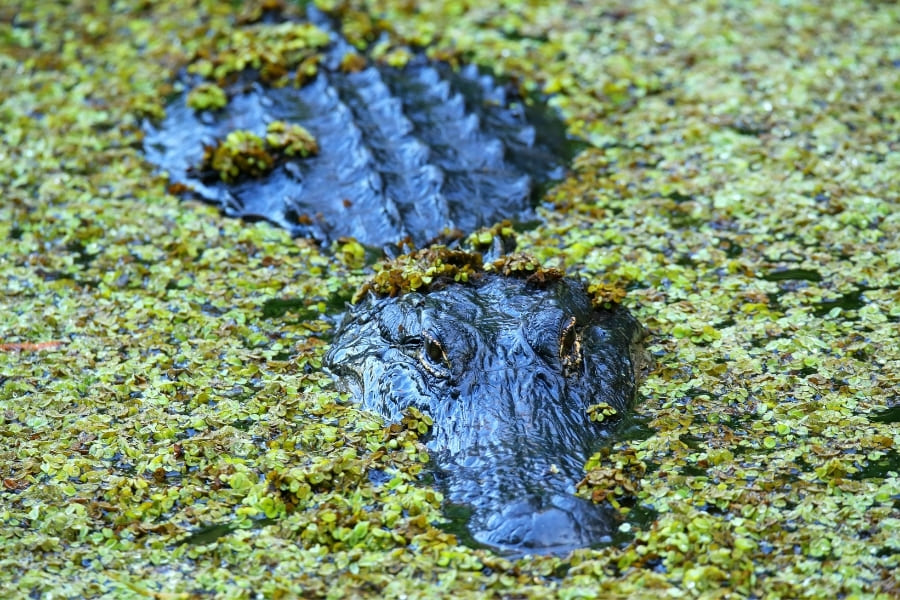
GUIDED TOURS AT CORKSCREW SWAMP SANCTUARY
If you want to explore the Corkscrew Swamp Sanctuary with a group and learn more about South Florida’s biodiversity, you can choose from the following tours:
- Free guided tours on the boardwalk; duration: 1.5 hours
- Early Birding Walk: guided bird-watching tours in the morning
- Ancient Forest Tour: Tours through the ancient cypress forest
- Hikes in the flatwoods, away from the boardwalk
- Butterfly Orientation Workshop: Talks and excursions about butterflies
- Sunset Strolls: Hikes at sunset with interesting infos about the park’s nocturnal animals.
- Night Walks: the perfect opportunity to hear the park’s animals after dark.
To find out more about available tour dates, hours and prices, visit the official website corkscrew.audubon.org. There, you can also read about events such as lectures, concerts, art exhibitions at the visitor center and open-air meditation courses
INFORMATION FOR VISITORS
The Corkscrew Swamp Sanctuary features multiple picnic areas. Eating on the boardwalk, however, is forbidden. From December to April, sandwiches are sold at the visitor center.
The boardwalk is accessible for strollers and wheelchairs. Dogs are not allowed at the Corkscrew Swamp Sanctuary. You will find more information and a map of the hiking trail on the official website https://corkscrew.audubon.org.
DIRECTIONS, OPENING HOURS AND PRICES
The Corkscrew Swamp Sanctuary can be reached from Naples in 40 minutes by car. Just follow the brown direction signs on Immokalee Road. On-site parking is free.
The boardwalk is open daily from 7 am to 5.30 pm. Last admission is at 4.30 pm, and the visitor center closes at 5.30 pm every day.
Tickets cost 14 USD for adults and 4 USD for children aged 6–18. Children under 6 visit for free. If you purchase your ticket in the afternoon, you can use it again the next day in the morning.


